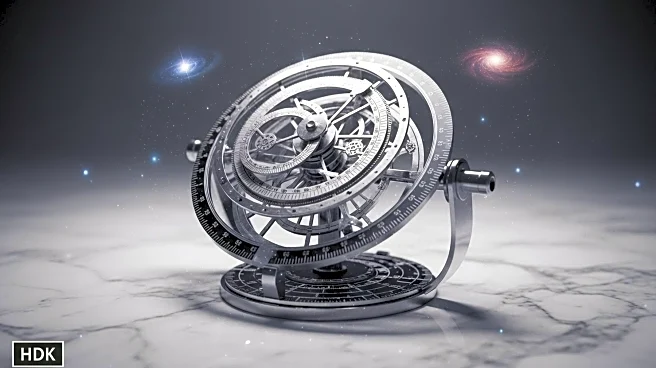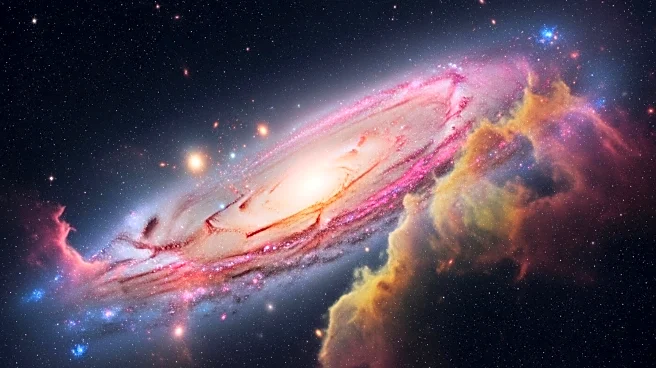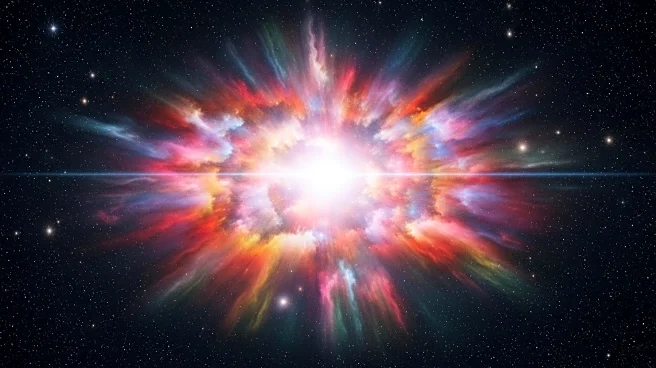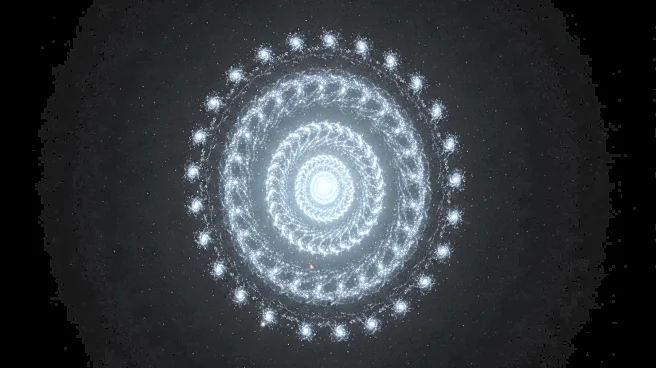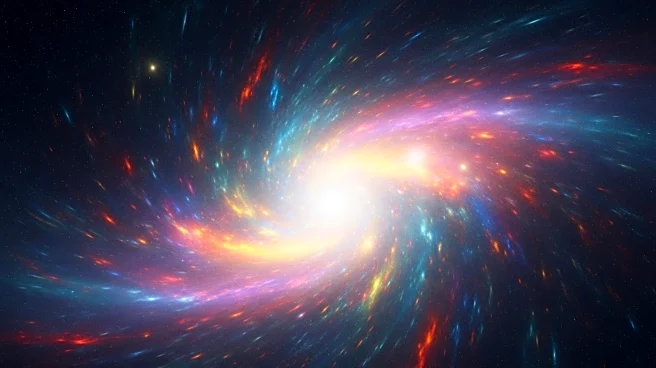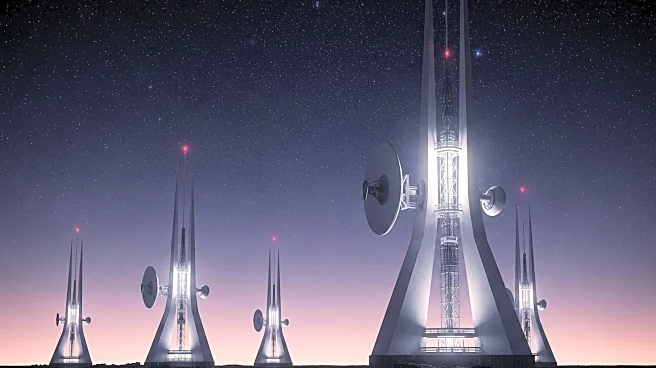What's Happening?
A new study led by Rajendra Gupta, an Adjunct Professor in the Department of Physics at the University of Ottawa, proposes that dark matter and dark energy may not exist. Instead, the study suggests that the observed effects attributed to these components could be explained by the gradual weakening of the universe's fundamental forces over time. This theory challenges the long-held belief that dark matter and dark energy constitute most of the cosmos. Gupta's model introduces a parameter, denoted as α, which emerges from evolving coupling constants and behaves like an extra component in gravitational equations, producing effects similar to those attributed to dark matter and dark energy.
Why It's Important?
This study has significant implications for the field of astronomy and cosmology. If Gupta's model is correct, it could reshape our understanding of the universe and eliminate the need to search for dark matter particles, potentially saving billions of dollars in research funding. The model offers a unified explanation for phenomena observed at both cosmological and astrophysical scales without relying on exotic particles. This could simplify the timeline of the universe's formation, making it easier to explain the rapid development of galaxies and black holes in the early universe.
What's Next?
The study suggests a paradigm shift in how astronomers and physicists approach the mysteries of the universe. Future research may focus on testing Gupta's model against observational data to validate its predictions. If successful, this could lead to a reevaluation of current theoretical models and influence the direction of future astronomical research.
Beyond the Headlines
The implications of this study extend beyond scientific research, potentially affecting public policy and funding priorities in space exploration and research. It also raises philosophical questions about the nature of the universe and our understanding of its fundamental forces.

